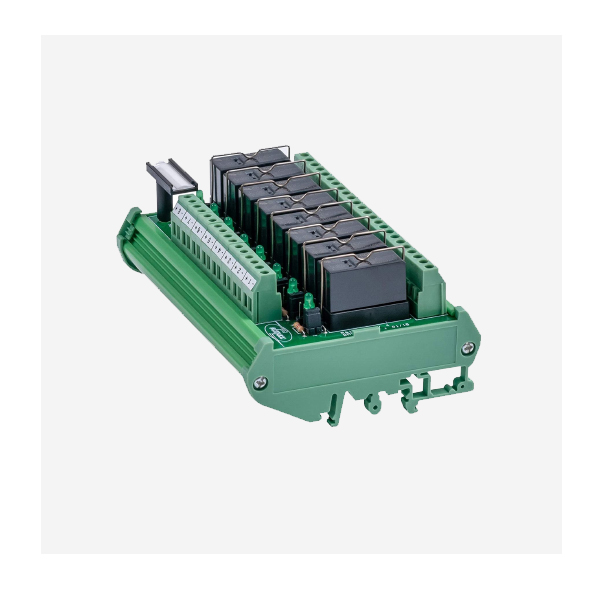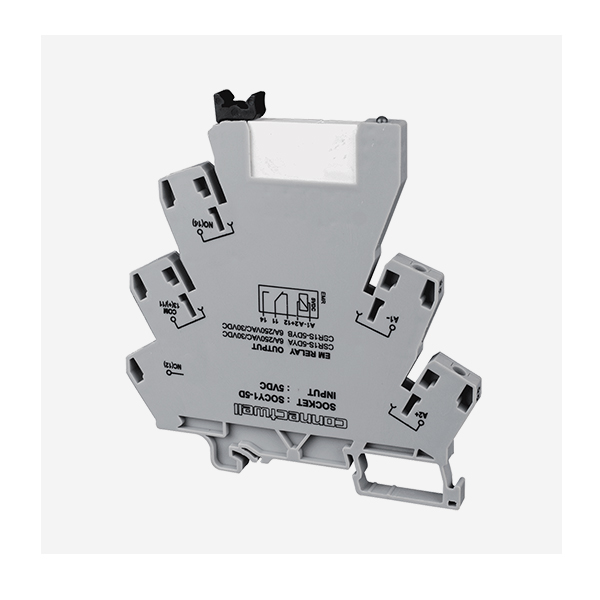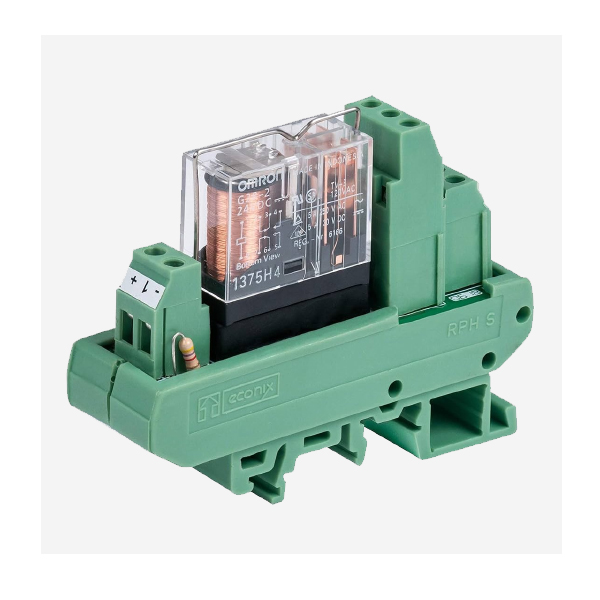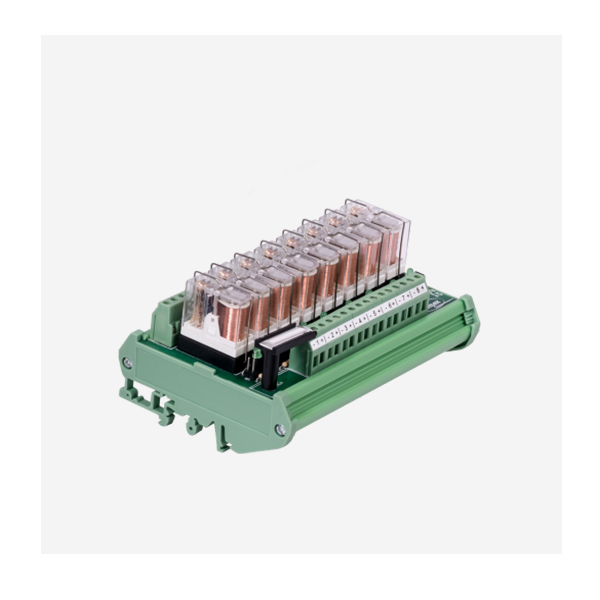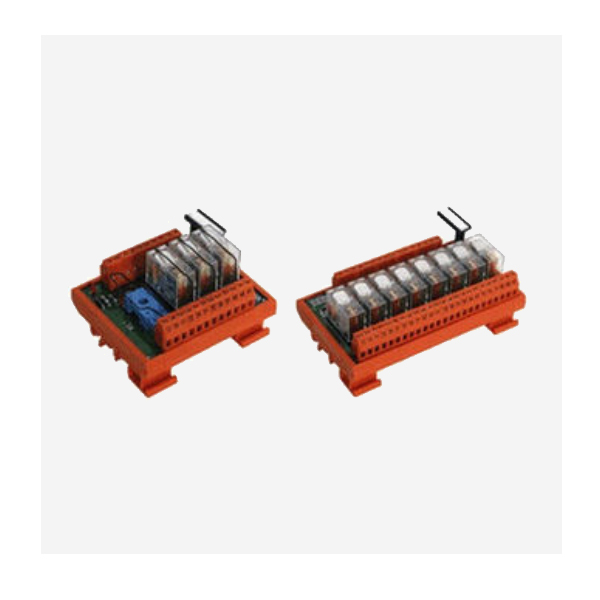Relay Interface Module
A Relay Interface Module is used to provide isolation and control between low-voltage control circuits and high-power electrical loads. It ensures safe and reliable switching for industrial automation, HVAC systems, and control panels.
Applications
- Industrial automation systems for controlling motors and actuators.
- Power distribution panels to interface between PLCs and heavy-duty electrical
loads.
- HVAC systems for switching high-power components like compressors and fans.
- Security and alarm systems for activating sirens, locks, or lighting.
- Process control industries where low-power signals control high-power
equipment.
Construction
- Relay Coil & Contacts: The module contains electromechanical or solid-state
relays for switching operations.
- Input Terminals: Accepts control signals from PLCs, microcontrollers, or
sensors.
- Output Terminals: Connects to electrical loads such as motors, solenoids, or
heaters.
- Opto-Isolation (Optional): Some modules include optocouplers to provide
electrical isolation.
- DIN Rail Mounting: Designed for easy installation in control panels and
electrical enclosures.
- LED Indicators: Provides status indication for relay operation.
